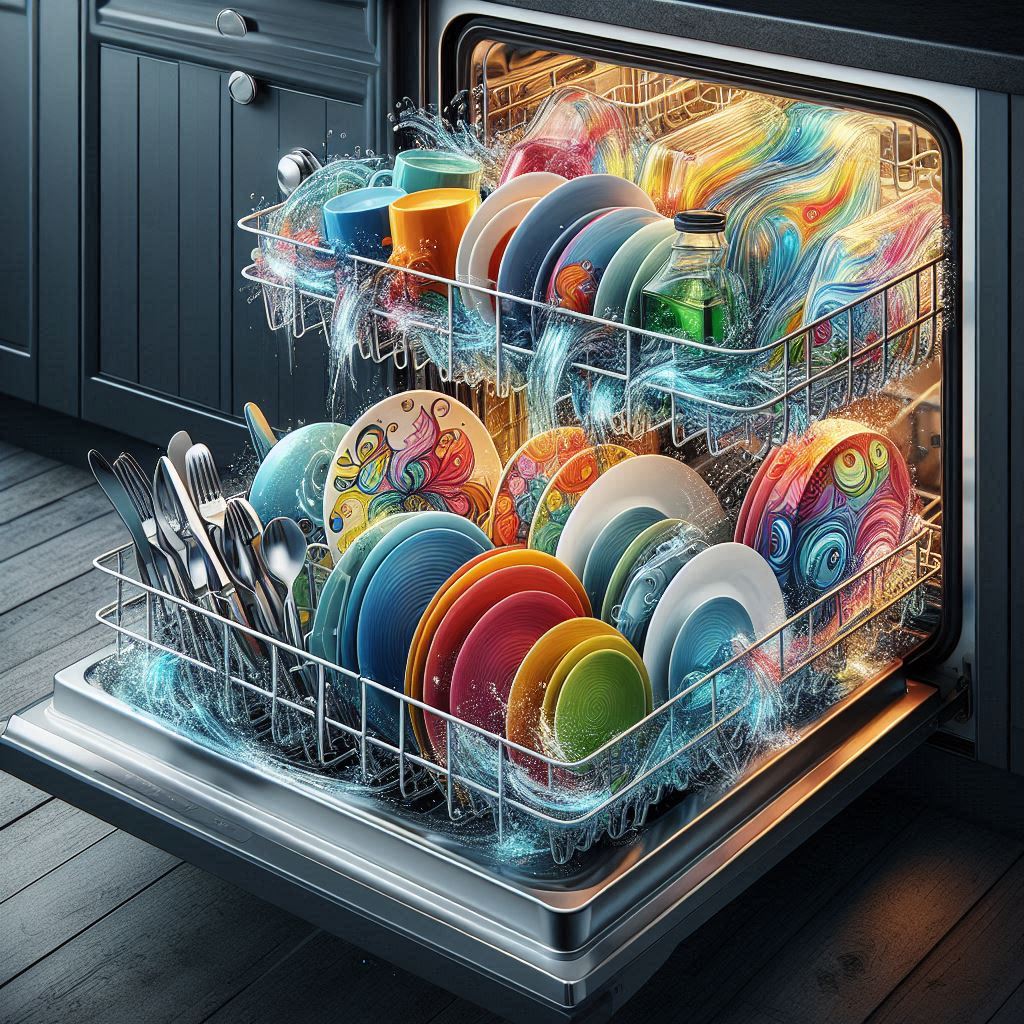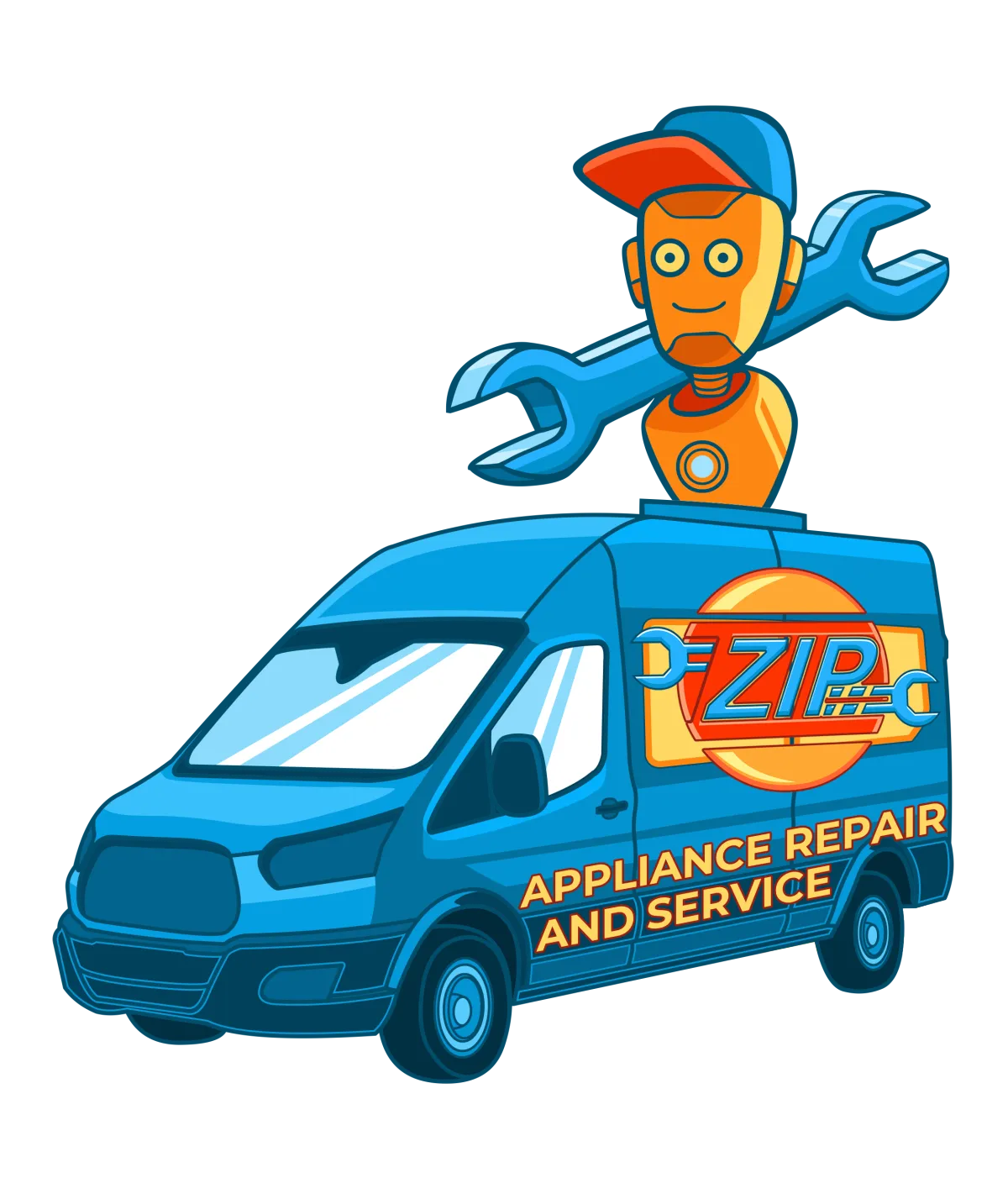THE FASTEST TOOLS IN TOWN
ZIP APPLIANCE REPAIR & SERVICE
Phone: (559) 272-4265
Phone: (559) 272-4265
Appliance Repair Tips For Fresno, CA Residents

DIY Fixes for a Dishwasher That Won’t Start
When your dishwasher won’t start, knowing what to do can save you time and hassle—discover practical solutions to get your appliance back in action. - Appliance Boss
Introduction
A dishwasher that won’t start can quickly turn a straightforward task into a frustrating ordeal. This common appliance malfunction is often a symptom of underlying issues, ranging from simple user errors to more complex technical failures. Understanding why a dishwasher might refuse to start and how to address these problems can help restore your appliance's functionality and ensure that clean dishes are always just a cycle away.
Why a Dishwasher Not Starting Is a Common Issue
Dishwashers are intricate machines with many components working in harmony. Any one of these parts can malfunction, causing the appliance to refuse to start. From electrical issues to mechanical failures, the reasons behind a dishwasher's reluctance to start can vary widely. Understanding these common issues helps in diagnosing and fixing the problem efficiently.

Initial Troubleshooting Steps
Before diving into more complex solutions, start with these basic troubleshooting steps to identify and resolve the issue.
Check the Power Supply: Ensuring Proper Electrical Connection
First, verify that the dishwasher is receiving power. Check that the power cord is securely plugged into the electrical outlet. A loose connection can prevent the appliance from starting. Ensure that the outlet is functioning properly by testing it with another device or using a voltage tester.
Inspect the Door Latch: Why It’s Crucial for Starting
The door latch plays a critical role in the operation of the dishwasher. If the door isn’t securely latched, the dishwasher won’t start. Examine the latch for any signs of damage or wear. Ensure it engages properly and that the door seal is intact, providing a tight closure.
Examine the Control Panel: Understanding Common Errors
The control panel is the brain of your dishwasher, and issues here can prevent it from starting. Check for any visible error codes or flashing lights on the panel. These indicators often point to specific problems. Consult the user manual to decode any error messages and address the underlying issues.
Power Supply Issues
If initial checks don’t resolve the problem, the issue may lie in the power supply.
Verify the Power Cord Connection: Simple Checks for Power
Ensure the power cord is firmly connected to both the dishwasher and the wall outlet. A loose or damaged cord can interrupt power flow. If the cord appears frayed or damaged, it may need replacement.
Resetting the Circuit Breaker: A Quick Fix for Power Problems
Sometimes, the circuit breaker may have tripped, cutting off power to the dishwasher. Locate your home's electrical panel and check if the breaker for the dishwasher is in the "off" position. Reset it by switching it to the "off" position and then back to "on."
Testing the Electrical Outlet: Ensuring Power Supply
If the dishwasher still won’t start, test the electrical outlet. Use a multimeter to check if it’s delivering the correct voltage. If the outlet is faulty, it will need to be repaired or replaced to restore power to the dishwasher.
Door and Latch Mechanisms
Problems with the door and latch mechanisms can prevent the dishwasher from starting.
Inspecting the Door Seal: Ensuring a Proper Seal for Operation
A damaged or dirty door seal can prevent the dishwasher from starting. Inspect the seal for any signs of wear, tears, or debris. Clean the seal regularly to maintain a proper seal, ensuring that the door closes tightly.
Testing the Door Latch and Switch: Common Failures and Fixes
The door latch and its associated switch ensure the dishwasher’s door is securely closed. If these components fail, the dishwasher won’t start. Test the latch and switch with a multimeter to check for continuity. Replace any faulty parts as needed.
Understanding the Interlock System: How It Affects Starting
The interlock system ensures the dishwasher starts only when the door is properly closed. If the interlock fails, the dishwasher may not start. Verify that the interlock engages properly when the door is closed and replace it if necessary.
Control Panel and Settings
Issues with the control panel or settings can prevent the dishwasher from starting.
Reviewing Control Settings: Checking for Correct Program Selection
Ensure the correct wash program is selected. If the settings are incorrect or if a cycle was not fully selected, the dishwasher may not start. Consult the user manual to understand the correct settings for your dishwasher.
Resetting the Dishwasher: How to Perform a Soft Reset
A soft reset can resolve minor glitches in the control panel. To perform a reset, turn off the dishwasher using the power button or unplug it from the power source. Wait a few minutes, then turn it back on or plug it in again to see if the issue is resolved.
Troubleshooting Error Codes: What They Mean and How to Address Them
Error codes displayed on the control panel can indicate specific problems. Refer to the user manual to decode these error messages and follow the recommended steps to address the issues they signify.
Internal Components
Internal components can affect the dishwasher’s ability to start and function properly.
Examining the Door Switch: Its Role in Starting the Dishwasher
The door switch detects whether the door is securely closed. If it malfunctions, the dishwasher won’t start. Inspect the switch for proper operation and replace it if it’s defective.
Checking the Thermal Fuse: A Key Safety Component
The thermal fuse protects the dishwasher from overheating. If the fuse is blown, the dishwasher won’t start. Test the fuse with a multimeter and replace it if necessary.
Testing the Start Relay: Ensuring It’s Working Correctly
The start relay activates the dishwasher’s motor. If it fails, the dishwasher won’t start. Test the relay with a multimeter to ensure it’s functioning properly. Replace any faulty relays to restore operation.
Water Supply and Drainage
Issues with water supply and drainage can prevent the dishwasher from starting.
Verifying Water Supply: Ensuring Water Flow to the Dishwasher
Check that the water supply valve is open and that there are no kinks in the hose. If the dishwasher isn’t receiving water, it won’t start. Ensure proper water flow to the appliance.
Inspecting the Water Inlet Valve: Common Failures and Solutions
The water inlet valve controls water flow into the dishwasher. If it’s faulty, the dishwasher may not start. Inspect the valve for clogs or damage and replace it if necessary.
Clearing Blockages: Addressing Issues with the Drain Hose
A blocked drain hose can prevent proper drainage and affect the dishwasher’s ability to start. Clear any obstructions from the hose to ensure proper water flow.
Motor and Pump Issues
The motor and pump are crucial for dishwasher operation and can affect starting.
Understanding the Motor’s Role: What Happens When It Fails
The motor drives the dishwasher’s components and pumps water throughout the appliance. If the motor fails, the dishwasher won’t start. Inspect the motor for signs of damage and replace it if necessary.
Testing the Circulation Pump: Ensuring Proper Water Flow
The circulation pump helps distribute water during the wash cycle. If it’s not functioning, the dishwasher may not start. Test the pump for proper operation and check for any obstructions.
Assessing the Drain Pump: Checking for Obstructions and Function
The drain pump expels water from the dishwasher. A malfunctioning pump can prevent the dishwasher from starting. Inspect the pump for debris or damage and ensure it operates correctly.
Common User Errors
Sometimes, user errors can prevent the dishwasher from starting.
Confirming Proper Loading: Avoiding Issues with Overloading
Overloading the dishwasher or improperly loading items can block water and detergent from reaching all surfaces. Ensure that dishes are loaded according to the manufacturer’s guidelines to prevent starting issues.
Ensuring Proper Use of Detergents: How It Affects Starting
Using the wrong detergent or too much detergent can affect the dishwasher’s performance. Use the recommended detergent and follow the manufacturer’s instructions to avoid issues.
When to Seek Professional Help
Some problems require professional intervention.
Identifying Complex Problems: Knowing When to Call a Technician
If you’ve tried all troubleshooting steps and the dishwasher still won’t start, it may be time to call a professional. Complex issues such as electrical faults or internal component failures often require expert diagnosis and repair.
Choosing a Reliable Repair Service: Finding Help for Dishwasher Issues
When selecting a repair service, look for experienced technicians with good reviews. A reliable repair service will provide efficient solutions and ensure your dishwasher is properly fixed.
Preventative Measures
Preventing future issues can save time and money.
Regular Maintenance Tips: Keeping Your Dishwasher in Top Condition
Perform regular maintenance to keep your dishwasher running smoothly. Clean the filters, inspect the spray arms, and check for any signs of wear or damage.
Routine Checks to Avoid Starting Issues: How to Prevent Problems
Establish a routine for checking key components such as the power cord, door latch, and water supply. Regular inspections can help identify and address potential problems before they affect the dishwasher’s operation.
Conclusion
When your dishwasher won’t start, addressing the issue promptly is essential to restore its functionality and prevent further inconvenience. By following the outlined troubleshooting steps and performing regular maintenance, you can ensure that your dishwasher operates smoothly and reliably.
If you've tried these solutions and your dishwasher still won't start, professional assistance may be required. At Zip Appliance Repair and Service, we're here to help you get your appliance back in working order. For expert repairs and fast service, visit our website at fresno.ziprepairservice.com or call us at (559) 272-4265. Let us take care of the problem so you can enjoy clean dishes without the hassle.

DIY Fixes for a Dishwasher That Won’t Start
When your dishwasher won’t start, knowing what to do can save you time and hassle—discover practical solutions to get your appliance back in action. - Appliance Boss
Introduction
A dishwasher that won’t start can quickly turn a straightforward task into a frustrating ordeal. This common appliance malfunction is often a symptom of underlying issues, ranging from simple user errors to more complex technical failures. Understanding why a dishwasher might refuse to start and how to address these problems can help restore your appliance's functionality and ensure that clean dishes are always just a cycle away.
Why a Dishwasher Not Starting Is a Common Issue
Dishwashers are intricate machines with many components working in harmony. Any one of these parts can malfunction, causing the appliance to refuse to start. From electrical issues to mechanical failures, the reasons behind a dishwasher's reluctance to start can vary widely. Understanding these common issues helps in diagnosing and fixing the problem efficiently.

Initial Troubleshooting Steps
Before diving into more complex solutions, start with these basic troubleshooting steps to identify and resolve the issue.
Check the Power Supply: Ensuring Proper Electrical Connection
First, verify that the dishwasher is receiving power. Check that the power cord is securely plugged into the electrical outlet. A loose connection can prevent the appliance from starting. Ensure that the outlet is functioning properly by testing it with another device or using a voltage tester.
Inspect the Door Latch: Why It’s Crucial for Starting
The door latch plays a critical role in the operation of the dishwasher. If the door isn’t securely latched, the dishwasher won’t start. Examine the latch for any signs of damage or wear. Ensure it engages properly and that the door seal is intact, providing a tight closure.
Examine the Control Panel: Understanding Common Errors
The control panel is the brain of your dishwasher, and issues here can prevent it from starting. Check for any visible error codes or flashing lights on the panel. These indicators often point to specific problems. Consult the user manual to decode any error messages and address the underlying issues.
Power Supply Issues
If initial checks don’t resolve the problem, the issue may lie in the power supply.
Verify the Power Cord Connection: Simple Checks for Power
Ensure the power cord is firmly connected to both the dishwasher and the wall outlet. A loose or damaged cord can interrupt power flow. If the cord appears frayed or damaged, it may need replacement.
Resetting the Circuit Breaker: A Quick Fix for Power Problems
Sometimes, the circuit breaker may have tripped, cutting off power to the dishwasher. Locate your home's electrical panel and check if the breaker for the dishwasher is in the "off" position. Reset it by switching it to the "off" position and then back to "on."
Testing the Electrical Outlet: Ensuring Power Supply
If the dishwasher still won’t start, test the electrical outlet. Use a multimeter to check if it’s delivering the correct voltage. If the outlet is faulty, it will need to be repaired or replaced to restore power to the dishwasher.
Door and Latch Mechanisms
Problems with the door and latch mechanisms can prevent the dishwasher from starting.
Inspecting the Door Seal: Ensuring a Proper Seal for Operation
A damaged or dirty door seal can prevent the dishwasher from starting. Inspect the seal for any signs of wear, tears, or debris. Clean the seal regularly to maintain a proper seal, ensuring that the door closes tightly.
Testing the Door Latch and Switch: Common Failures and Fixes
The door latch and its associated switch ensure the dishwasher’s door is securely closed. If these components fail, the dishwasher won’t start. Test the latch and switch with a multimeter to check for continuity. Replace any faulty parts as needed.
Understanding the Interlock System: How It Affects Starting
The interlock system ensures the dishwasher starts only when the door is properly closed. If the interlock fails, the dishwasher may not start. Verify that the interlock engages properly when the door is closed and replace it if necessary.
Control Panel and Settings
Issues with the control panel or settings can prevent the dishwasher from starting.
Reviewing Control Settings: Checking for Correct Program Selection
Ensure the correct wash program is selected. If the settings are incorrect or if a cycle was not fully selected, the dishwasher may not start. Consult the user manual to understand the correct settings for your dishwasher.
Resetting the Dishwasher: How to Perform a Soft Reset
A soft reset can resolve minor glitches in the control panel. To perform a reset, turn off the dishwasher using the power button or unplug it from the power source. Wait a few minutes, then turn it back on or plug it in again to see if the issue is resolved.
Troubleshooting Error Codes: What They Mean and How to Address Them
Error codes displayed on the control panel can indicate specific problems. Refer to the user manual to decode these error messages and follow the recommended steps to address the issues they signify.
Internal Components
Internal components can affect the dishwasher’s ability to start and function properly.
Examining the Door Switch: Its Role in Starting the Dishwasher
The door switch detects whether the door is securely closed. If it malfunctions, the dishwasher won’t start. Inspect the switch for proper operation and replace it if it’s defective.
Checking the Thermal Fuse: A Key Safety Component
The thermal fuse protects the dishwasher from overheating. If the fuse is blown, the dishwasher won’t start. Test the fuse with a multimeter and replace it if necessary.
Testing the Start Relay: Ensuring It’s Working Correctly
The start relay activates the dishwasher’s motor. If it fails, the dishwasher won’t start. Test the relay with a multimeter to ensure it’s functioning properly. Replace any faulty relays to restore operation.
Water Supply and Drainage
Issues with water supply and drainage can prevent the dishwasher from starting.
Verifying Water Supply: Ensuring Water Flow to the Dishwasher
Check that the water supply valve is open and that there are no kinks in the hose. If the dishwasher isn’t receiving water, it won’t start. Ensure proper water flow to the appliance.
Inspecting the Water Inlet Valve: Common Failures and Solutions
The water inlet valve controls water flow into the dishwasher. If it’s faulty, the dishwasher may not start. Inspect the valve for clogs or damage and replace it if necessary.
Clearing Blockages: Addressing Issues with the Drain Hose
A blocked drain hose can prevent proper drainage and affect the dishwasher’s ability to start. Clear any obstructions from the hose to ensure proper water flow.
Motor and Pump Issues
The motor and pump are crucial for dishwasher operation and can affect starting.
Understanding the Motor’s Role: What Happens When It Fails
The motor drives the dishwasher’s components and pumps water throughout the appliance. If the motor fails, the dishwasher won’t start. Inspect the motor for signs of damage and replace it if necessary.
Testing the Circulation Pump: Ensuring Proper Water Flow
The circulation pump helps distribute water during the wash cycle. If it’s not functioning, the dishwasher may not start. Test the pump for proper operation and check for any obstructions.
Assessing the Drain Pump: Checking for Obstructions and Function
The drain pump expels water from the dishwasher. A malfunctioning pump can prevent the dishwasher from starting. Inspect the pump for debris or damage and ensure it operates correctly.
Common User Errors
Sometimes, user errors can prevent the dishwasher from starting.
Confirming Proper Loading: Avoiding Issues with Overloading
Overloading the dishwasher or improperly loading items can block water and detergent from reaching all surfaces. Ensure that dishes are loaded according to the manufacturer’s guidelines to prevent starting issues.
Ensuring Proper Use of Detergents: How It Affects Starting
Using the wrong detergent or too much detergent can affect the dishwasher’s performance. Use the recommended detergent and follow the manufacturer’s instructions to avoid issues.
When to Seek Professional Help
Some problems require professional intervention.
Identifying Complex Problems: Knowing When to Call a Technician
If you’ve tried all troubleshooting steps and the dishwasher still won’t start, it may be time to call a professional. Complex issues such as electrical faults or internal component failures often require expert diagnosis and repair.
Choosing a Reliable Repair Service: Finding Help for Dishwasher Issues
When selecting a repair service, look for experienced technicians with good reviews. A reliable repair service will provide efficient solutions and ensure your dishwasher is properly fixed.
Preventative Measures
Preventing future issues can save time and money.
Regular Maintenance Tips: Keeping Your Dishwasher in Top Condition
Perform regular maintenance to keep your dishwasher running smoothly. Clean the filters, inspect the spray arms, and check for any signs of wear or damage.
Routine Checks to Avoid Starting Issues: How to Prevent Problems
Establish a routine for checking key components such as the power cord, door latch, and water supply. Regular inspections can help identify and address potential problems before they affect the dishwasher’s operation.
Conclusion
When your dishwasher won’t start, addressing the issue promptly is essential to restore its functionality and prevent further inconvenience. By following the outlined troubleshooting steps and performing regular maintenance, you can ensure that your dishwasher operates smoothly and reliably.
If you've tried these solutions and your dishwasher still won't start, professional assistance may be required. At Zip Appliance Repair and Service, we're here to help you get your appliance back in working order. For expert repairs and fast service, visit our website at fresno.ziprepairservice.com or call us at (559) 272-4265. Let us take care of the problem so you can enjoy clean dishes without the hassle.
If your dryer has been giving you problems, contact Zip Appliance Repair & Service at (559) 272-4265

Appliance Repair In A Zip
If you need a dryer repair call our Team at (559) 272-4265, or visit our online scheduling page to request service.
Appliance Repair
HAVE A QUESTION, CALL (559) 272-4265

Online Offers
Take advantage of our online discount offers - save time and money...

Residential & Commercial appliances
See what our company can do for you

Appliance Repair Tips
If your appliance is not working properly...

1405 Commercial Way ste 100
Bakersfield, CA 93309
Lic # 1116346
Equipment We Sevice
- A Call To Confirm Your Appointment Time
- A Email Detailing Your Assigned Technician
- Information Needed Before The Repair Can Be Started
- An Estimate Of Work To Be Done
© 2025 ZIP APPLIANCE REPAIR & SERVICE LLC







